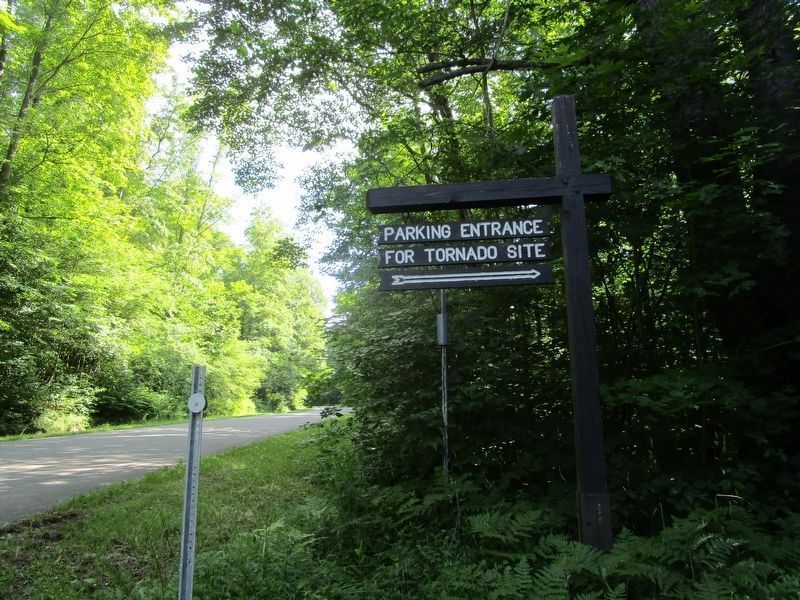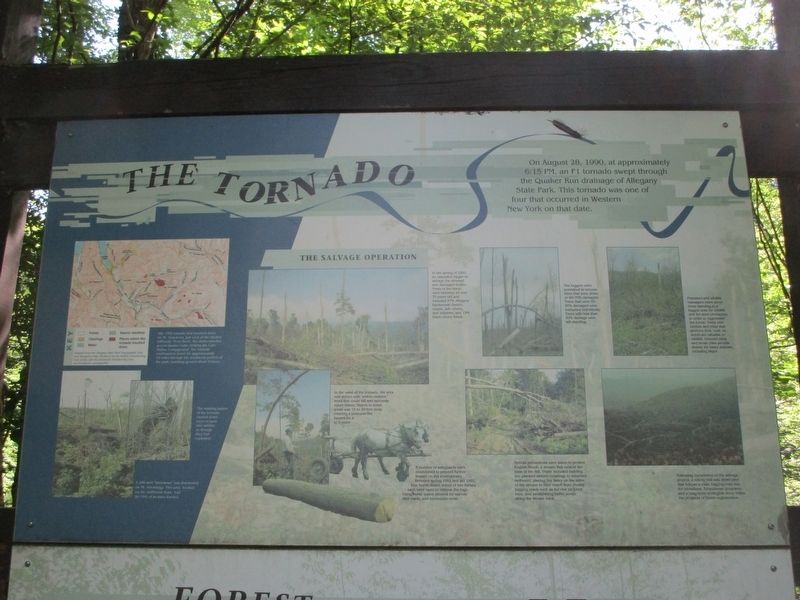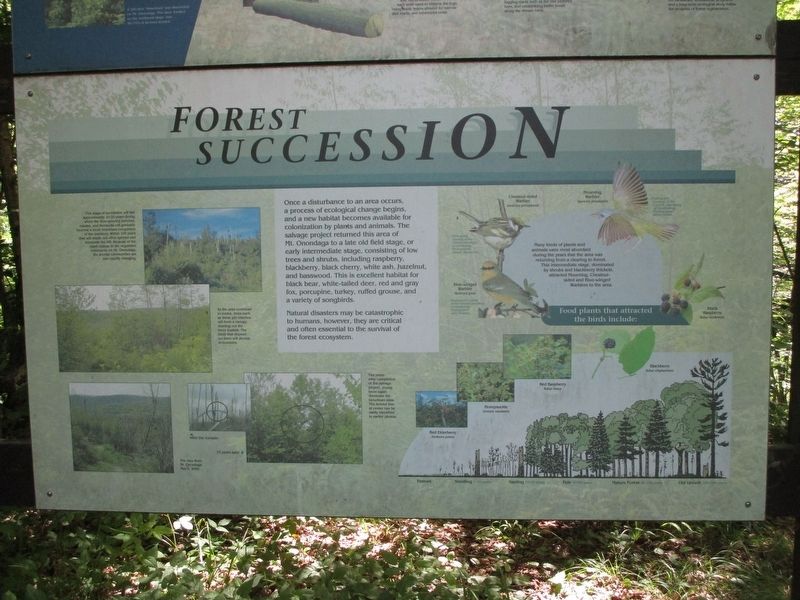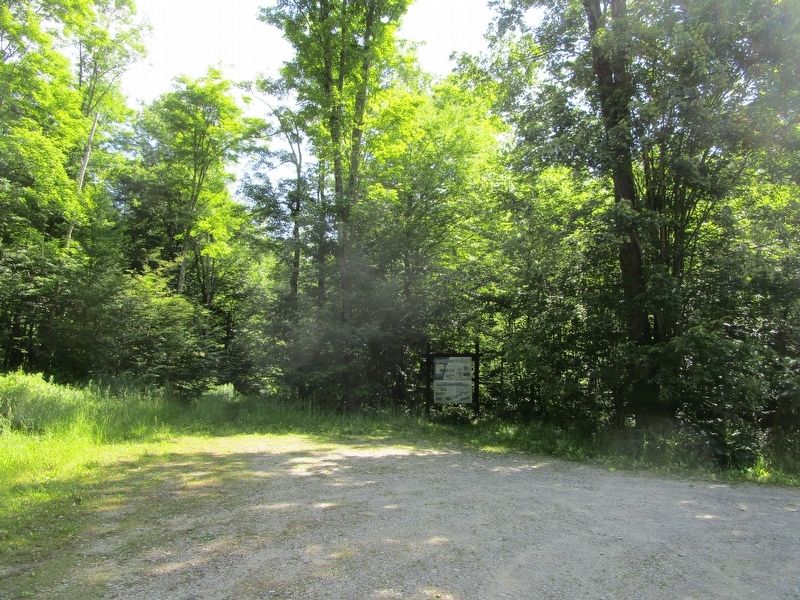Red House in Cattaraugus County, New York — The American Northeast (Mid-Atlantic)
The Tornado / Forest Succession
The Tornado
On August 28, 1990, at approximately 6:15 PM, an F1 tornado swept through the Quaker Run drainage of Allegany State Park. This tornado was one of four that occurred in Western New York on that date.
The tornado first touched down on Mt. Tuscarora, just west of the Quaker tollbooth. From there, the storm traveled across Quaker Lake, striking the Cain Hollow Campground. The tornado continued to travel for approximately 10 miles through the southwest portion of the park, touching the ground about 9 times.
The twisting nature of the tornado caused some trees to splinter as though they had exploded.
A 200-acre “blowdown” was discovered on Mt. Onondaga. This area, located on the northwest slope, had 50-70% of its trees leveled.
The Salvage Operation
In the wake of the tornado, the area was strewn with “widow makers,” trees that could fall and seriously injure hikers. Debris in some areas was 15 to 20 feet deep, creating a potential fire hazard for 4 to 5 years.
In the spring of 1991, an operation began to salvage the downed and damaged timber. Trees in the stand were between 25 and 70 years old and included 87% Allegany hardwoods (beech, maple, ash, cherry, and tuliptree) and 13% black cherry forest.
The loggers were permitted to remove trees that were down or 60-70% damaged. Trees that were 50-60% damaged were evaluated individually. Trees with less than 50% damage were left standing.
Foresters and wildlife managers leave some trees standing in a logged area for wildlife and for seed production in order to regenerate the forest. Trees with cavities and trees that produce fruit, nuts, or seed are valuable to wildlife. Downed trees and brush piles provide shelter for many animals including bears.
A number of safeguards were established to prevent further impact on the environment. Between spring 1991 and fall 1992, four horse-drawn teams of two horses each were used to remove the logs. Using horse teams allowed for narrow skid roads and minimized noise.
Special precautions were taken to protect English Brook, a stream that runs at the base of the hill. These included building two planked stream crossings to minimize sediment, placing hay bales on the sides of the stream to filter runoff from muddy logging roads such as the one pictured here, and establishing buffer zones along the stream bank.
Following completion of the salvage project, a hiking trail was developed that follows a main logging road into the blowdown. Educational programs and a long-term ecological study follow the progress of forest regeneration.
Forest Succession
Once a disturbance to an area occurs, a process of ecological change begins, and a new habitat becomes available for colonization by plants and animals. The salvage project returned this area of Mt. Onondaga to a late old field stage, or early intermediate stage, consisting of low trees and shrubs, including raspberry, black cherry, white ash, hazelnut, and basswood. This is excellent habitat for black bear, white-tailed deer, red and gray fox, porcupine, turkey, ruffed grouse, and a variety of songbirds.
Natural disasters may be catastrophic to humans, however, they are critical and often essential to the survival of the forest ecosystem.
This stage of succession will last approximately 10-20 years during which the slow-growing beeches, maples, and hemlocks will gradually become a more important component of the overstory. Within 100 years they will shade out other species and dominate the hill. Because of the rapid change in the vegetative community on Mt. Onondaga, the animal communities are also rapidly changing.
As the area continues to evolve, trees such as these pin cherries will form a canopy, shading out the berry bushes. The birds that depend on them will decline in numbers.
The view from Mt. Onondaga May 5, 2000. After the tornado. 10 years later.
Ten years after completion of the salvage project, young trees again dominate the blowdown area. The bowed tree at center
can be easily identified in earlier photos.
Many kinds of plants and animals were most abundant during the years that the area was returning from a clearing to a forest. This intermediate stage, dominated by shrubs and blackberry thickets, attracted Mourning, Chestnut-sided and Blue-winged Warblers to the area.
Food plants that attracted the birds include: Red Elderberry, Honeysuckle, Red Raspberry, Blackberry, Black Raspberry.
Pasture. Seedling 1-10 years. Sapling 10-20 years. Pole 20-60 years. Mature Forest 60-150 years. Old Growth 150-300 years.
Topics. This historical marker is listed in these topic lists: Disasters • Horticulture & Forestry • Parks & Recreational Areas. A significant historical date for this entry is August 28, 1990.
Location. 42° 1.772′ N, 78° 48.581′ W. Marker is in Red House, New York, in Cattaraugus County. Marker can be reached from Allegany State Park Route 1,, 2 miles north of Allegany State Park Route 3. Touch for map. Marker is in this post office area: Salamanca NY 14779, United States of America. Touch for directions.
Other nearby markers. At least 8 other markers are within 6 miles of this marker, measured as the crow flies. Allegany State Park's Fancher Cabin (approx. 1.3 miles away); Allegany State Park's Oldest Cabin (approx. 1.3 miles away); The School in the Forest (approx. 2˝ miles away); Site of First Wild Turkey Trap & Transfer Program (approx.

Photographed By Anton Schwarzmueller, July 2, 2019
4. Parking Entrance to the Markers
View is northward on ASP-1. If approaching from the north, this sign may be blocked by foliage, as it was this day. It is 0.7 miles south of the Bear Springs trail head. The driveway to the parking area is very narrow.
Credits. This page was last revised on July 8, 2019. It was originally submitted on July 8, 2019, by Anton Schwarzmueller of Wilson, New York. This page has been viewed 367 times since then and 32 times this year. Photos: 1, 2, 3, 4. submitted on July 8, 2019, by Anton Schwarzmueller of Wilson, New York.


